
What do investors mean when they talk about “leverage” in real estate, anyway?
It may sound jargony, but real estate leverage is actually a simple concept, and one of the great advantages to real estate investments over other asset classes.
But it also comes with risks, so make sure you understand how to use it before going buck wild with debt.
What Is Leverage in Real Estate Investing?
Leverage in real estate is, quite simply, the ability to use other people’s money to buy your own assets. Assets that generate ongoing income for you, and that appreciate over time.
For example, when you buy a rental property, you can often borrow 80% of the purchase price from a mortgage lender. You only come up with 20% of the price on your own.
Contrast that against stocks, where brokerages don’t allow nearly the same extent of leverage. Even when they let you buy on margin, they often only lend up to 50% of your portfolio balance — and at high interest rates to boot. Worse, they can “call” your leveraged stocks that you bought on margin, if the stocks go down in value. In other words, they can force you to sell at a loss (known as a margin call).
That doesn’t happen in real estate investing.
How Real Estate Leverage Helps Investors
The first and most obvious way that leverage helps real estate investors is by reducing the amount of cash they need to buy a property.
At the time of this writing, the median home price in the US is $374,900. Imagine if you had to cough up all that money in cash to buy a rental property! Only the wealthy would be able to afford to invest in real estate.
But the advantages to leverage in real estate don’t end there.
Amplified Returns
Leverage can also improve your cash-on-cash return on a property. For example, imagine you buy a rental property in cash for $200,000, that rents for $2,500 per month. Assuming non-mortgage expenses at half the rent (the 50% Rule), your total monthly net cash flow comes to $1,250 per month, or $15,000 per year. That offers you a return of 7.5% ($15,000 / $200,000): not too shabby, but hardly a home run.
Now imagine you instead take out a 30-year rental property mortgage for $160,000 at 4.5% interest, which adds a monthly principal and interest payment of $764. That cuts your net monthly cash flow to $486, for an annual cash flow of $5,832.
But you only put down $40,000 in cash, not $200,000. Your cash-on-cash return is therefore 14.6% — nearly double what you’d get if you’d paid cash for the property.
Use our free rental income calculator to calculate returns, cash flow, mortgage payments, cash-on-cash return, and more.
Scaling Your Real Estate Portfolio
To truly grasp the scope of the difference, imagine two investors, each with $200,000 in cash to invest in rental properties.
One of them buys the property above in cash, while the other takes out rental property mortgages and buys five identical properties. At the end of their first year, the one who paid cash for a single property has $15,000 in net earnings. The one with five properties has almost twice that,$29,160 ($5,832 x 5 properties).
After the second year, the cash flow rises $50/month per property. The investor with one property walks away with an extra $600 at the end of the year, while the investor with five properties ends up with an extra $3,000.
And so on, with returns compounding fivefold with every year that goes by.
Don’t forget property appreciation, either. Imagine the properties appreciate at 4% per year on average: after ten years, each property is worth $296,049. The investor who bought one property in cash earned $96,049 in appreciation.
The investor who bought five properties earned $480,244 in appreciation.
And that says nothing of strategies like the BRRRR method that let you pull all of your cash back out of properties to keep reinvesting over and over again.
Starting to understand the power of leveraging other people’s money to build your real estate portfolio?
Types of Leverage in Real Estate
There are several ways to leverage other people’s money to invest in real estate.
Here are a few of the more common ones, along with a couple not-so-common ideas as well.
1. Traditional Mortgages
When most people think of leverage in real estate, they jump first to traditional mortgages, because it’s how they bought their primary residence.
On the plus side, these lenders tend to offer low interest rates and reasonable lender fees. If you house hack, you can even use owner-occupied financing for a minimum down payment and even lower interest rates. You can take advantage of down payments around 3% with Fannie Mae house hack loans, FHA loans, or VA loans.
But they come with plenty of downsides. First, they’re slow — they usually take 30-60 days to close a loan.
Second, they report to the credit bureaus. That may not sound like a problem, until you understand that they also limit the number of mortgages you can have appearing on your credit report. In most cases, they allow a maximum of four mortgages, putting a hard limit on how many traditional mortgages you can borrow.
For your first rental property or two, consider going through a traditional mortgage broker. Try Credible to compare interest rates in your area.
But after your first couple deals, you need to graduate to portfolio lenders.
2. Portfolio Loans
Traditional mortgage lenders sell off nearly all their loans immediately after closing them. In contrast, portfolio lenders keep their loans in-house for the entire life of the loan — keeping them on their own portfolio.
They’re faster and more flexible than traditional lenders, and make lending decisions based more on the quality of your deal than on you as a borrower. They still check your credit, but they often don’t verify your income.
A few of our favorite portfolio lenders include Kiavi, Visio, and LendingOne. But you can compare interest rates and loan terms of all the major rental property mortgage lenders on our Loans page.
3. HELOCs
A HELOC, or home equity line of credit, is exactly what it sounds like: a rotating line of credit secured against a property. Think of it like a credit card that you can draw on, but if you default, they take your property.
Most people think of HELOCs against their home, their primary residence. But you can take out a HELOC against a rental property too.
You can draw on HELOCs to potentially cover your down payment on your next property. Or buy a property in cash, or pay for repairs or renovations, or any number of other real estate investing costs.
You then pay back your HELOC balance on your own schedule, as quickly or slowly as you like.
You can open a HELOC with Figure in five days, and they offer HELOCs against investment properties, second homes, or primary residences.
4. Business Credit Lines & Cards
Many real estate investors don’t realize it, but they qualify for business credit cards and credit lines.
Unfortunately, most don’t know how to apply for maximum credit limits, how to negotiate higher limits, or where to find the best introductory offers and lowest interest rates. Or, for that matter, how to scrub their credit report and then open more lines.
We recommend speaking with Fund & Grow to do all of the above for you, to open between $50,000 – $250,000 in credit lines as a real estate investor.
Note that as business credit cards and credit lines, they aren’t secured against any of your properties. Which means you don’t have to pay for title searches, record liens, or risk losing properties to foreclosure in the event of a default.
Like HELOCs, you can use these credit lines to buy properties outright, cover the down payment, pay for renovations, or build your investing business by paying for mailers or other marketing strategies. Using business credit offers even more flexibility, as you can repay the balance at your own pace, with a low minimum monthly payment.
For an overview of how the process works, check out this free webinar we hosted with Fund & Grow.
5. Private Notes
Many of the most advanced real estate investors raise money through private notes, rather than borrowing from an actual lender.
A “note” is simply the legal document that a borrower signs, promising to repay a loan. Private notes are exactly what they sound like: a private loan from one individual to another.
You could borrow money from friends or family members, from colleagues, from other real estate investors. I myself lend money to other real estate investors I know and trust, at a 10% interest rate.
Why would anyone borrow money privately at 10% interest, rather than borrowing at 4-5% from a portfolio lender?
Flexibility, to begin with. They can put my money toward any of their current projects. I also charge interest only: the loan is not amortized over 30 years. So they keep the principal and keep investing it, just paying me interest once a quarter.
Many private lenders don’t charge fees or points, unlike lenders in business.
Ultimately, all of the terms are negotiable. That goes for points and fees, for interest rates, for the loan term. As you establish a track record of success, your friends and family members might throw money at you and charge appealing interest rates with no upfront fees.
(article continues below)
Risks of Overleveraging Real Estate
Leverage is a tool, and it cuts both ways. It can boost your potential return when you score a fantastic deal — or it can leave with a lower cash-on-cash return, possibly even a negative one.
Lower or Negative Cash Flow
While leveraging other people’s money amplifies your returns, that means it steepens your losses on low or negative returns. Let’s take another look at the example above, but this time assume a lower rent and cap rate.
Say that $200,000 property rents for $1,600 a month, not $2,500. By the 50% Rule, your net cash flow drops to $800 per month, or $10,800 per year. If you bought in cash, you’d earn a return of 4.8% ($10,800 / $200,000).
Now say you took out that same mortgage outlined above, with a principal and interest payment of $764. Your monthly cash flow drops to $36, or $432 per year. That puts your cash-on-cash return at 1.1% ($432 / $40,000).
If the property rented for $1,500/month, you’d lose money each month if you borrowed a rental property mortgage. Likewise, if you paid 5.5% interest instead of 4.5% interest, you’d have negative cash flow.
Then imagine you have a vacancy at the property, and really lose money each month. Or worse, four vacancies all at the same time.
Loss of Both Real Estate & Personal Assets
If you default on your rental property mortgage, the lender forecloses and takes your investment property.
But they don’t stop there — most require you to sign a personal guarantee on the mortgage, so they can come after all your personal assets if you default. Personal assets like your home, your car, your checking account, your brokerage account, your engagement ring, and so on.
Upside-Down Properties
Contrary to popular delusion, property values don’t always go up.
Most properties in most real estate markets rise in value in most years. As anyone who lived through the housing bubble in the late 2000s can tell you however, “usually” offers cold comfort for people watching their property plummet in value.
Which is no fun even if you don’t have any real estate loans, and own your property free and clear. But when you do have a mortgage and real estate prices drop, it can leave you upside-down on your property. In layman’s terms, being upside-down means owing more than the property is worth. That makes it extremely difficult to sell, at least without having to cough up money to cover the difference.
Make no mistake, real estate leverage comes with risk.
Tips for Using Leverage to Your Advantage
First and foremost, always use conservative numbers when you calculate real estate cash flow. That means running numbers with the lowest possible rent and the highest possible expenses. You’re better off occasionally missing a mediocre deal than chaining yourself to a property that loses you money.
Second, don’t try to put no down payment on a house. Down payments don’t just protect the lender, they also protect you from overleverage.
When you first start investing in real estate, you probably don’t have much cash. Then more than ever, you feel the temptation to borrow as much as humanly possible. But that’s also the point when you’re most likely to make mistakes — mistakes that cost you more if amplified by leverage.
Learn the fundamentals of real estate investing, and buy your first few properties with less leverage, not more. If you’re low on cash, try house hacking first. That gives you some margin for error, since the alternative is paying full price for housing.
As you learn the ropes and reliably buy profitable properties, you can then start leveraging other people’s money more to scale your portfolio. It takes discipline to save up more cash to invest in the beginning, but people without discipline shouldn’t invest in rental properties anyway.
Final Thoughts
Like any tool, leverage in real estate can be wielded with skill to produce better results, or it can be dangerous.
I overleveraged myself on a buying spree early in my real estate investing career, and it cost me dearly. Think hundreds of thousands of dollars.
Rather than trying to get clever and buy rentals or flip houses with no money down, save up some investing capital and master the fundamentals first. Then you can get creative with using other people’s money to build a real estate empire without much of your own cash.♦
What mistakes have you made with real estate leverage in the past? What are your biggest questions about leverage in real estate investing?
More Real Estate Investing Reads:
About the Author

G. Brian Davis is a landlord, real estate investor, and co-founder of SparkRental. His mission: to help 5,000 people reach financial independence by replacing their 9-5 jobs with rental income. If you want to be one of them, join Brian, Deni, and guest Scott Hoefler for a free masterclass on how Scott ditched his day job in under five years.









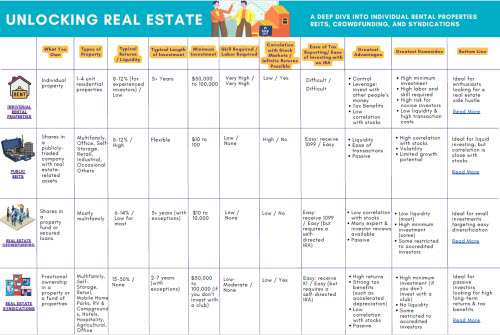


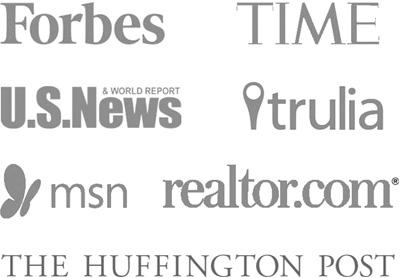
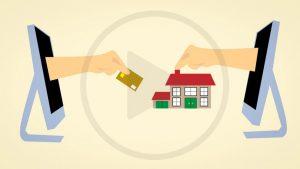




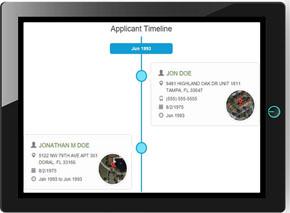




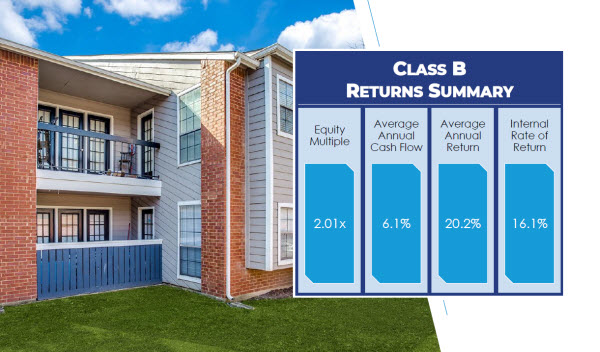



Having leverage in any field is always good. Having it in real estate is way too good!
Haha, leverage definitely cuts both ways!
Awesome blog. Very nice, simple explanation of leverage in real estate. Thank you!
Thanks Robin, much appreciated!
I always love to have leverage in real estate. Thanks Brian for the lovely article.
Thanks for the comment Domar!
Great info for real estate investors. Leveraging in real estate magnifies the returns on investment when used carefully. However, if you use leveraging excessively without understanding the concept of overleveraged real estate portfolio, you may end up sinking your ship.
Very true Mannu!
Be Careful with Leverage
Loans are convenient, but they may come at a big cost. You commit your future income to get utility today at the cost of interest spread across many years. Be sure you understand how to handle loans of this nature and avoid high levels of debt or what they call over-leverage. Even experts in real estate are challenged by over-leverage in times of adverse market conditions and the liquidity shortages with high debt obligations can break real estate projects.
Leverage definitely cuts both ways!
Wouldn’t the monthly principal and interest payment be 464$. Then we will earn 1250-464=786$ monthly and 9432$ a year. Which means we have 24% cash flow instead of 14.6%
Leverage surely is tricky. Thanks for the tip!
Thanks for the comment Missy!
Thanks for the insights.
Glad you found the article helpful JJ!
Taking on leverage can be a high-stakes game, and being mentally prepared is essential to survive the ups and downs. Unfortunately, I learned this the hard way when my first property ended up in foreclosure due to a tumultuous divorce. Demotivation, toxic behavior, and legal issues were like wrecking balls that destroyed everything I had worked so hard to build.
I’m so sorry to hear that Donna. You’re absolutely correct – real estate leverage does add to the risk.